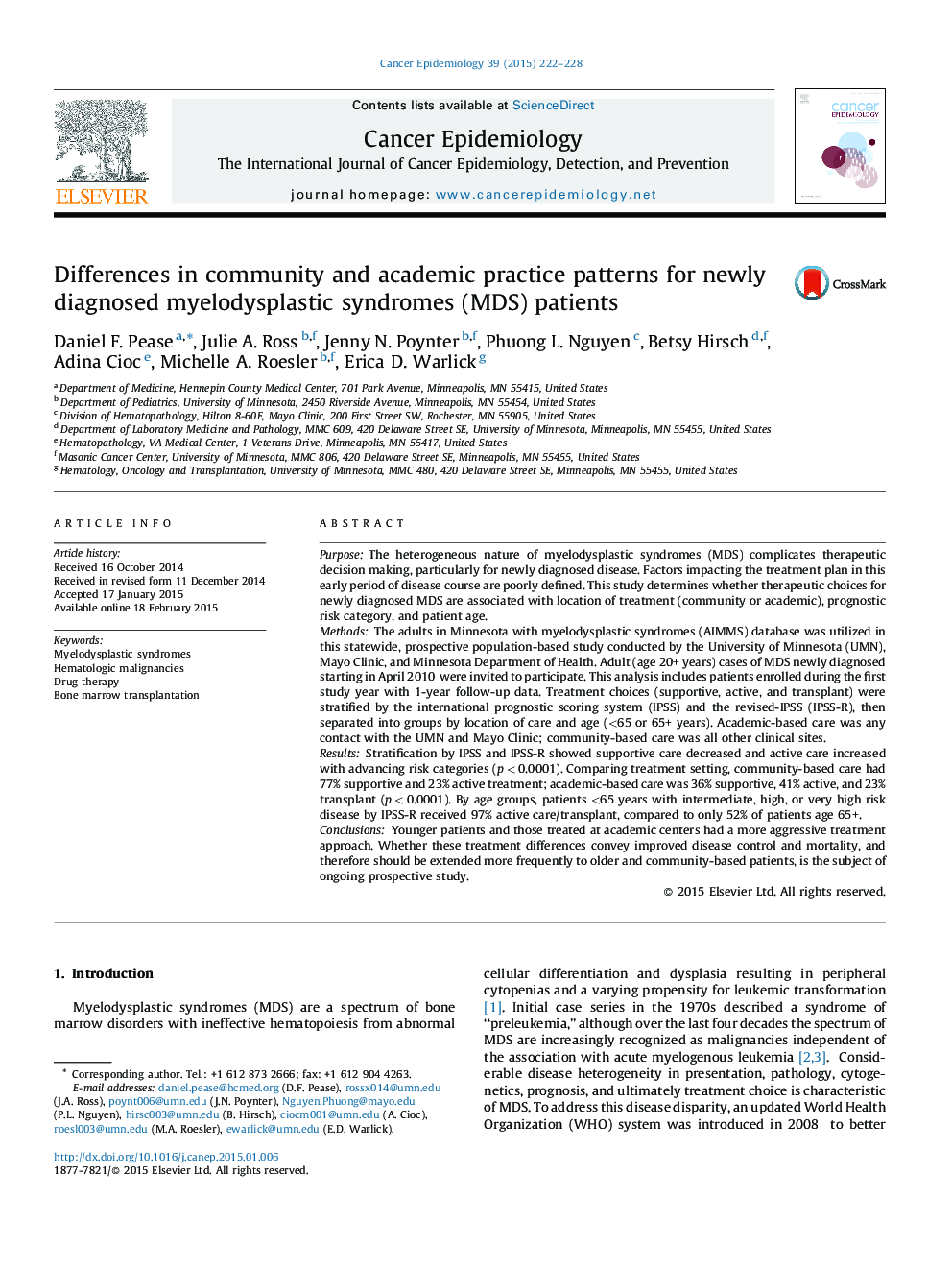| کد مقاله | کد نشریه | سال انتشار | مقاله انگلیسی | نسخه تمام متن |
|---|---|---|---|---|
| 2108893 | 1083847 | 2015 | 7 صفحه PDF | دانلود رایگان |

• Academic-based care was more aggressive compared to community-based care.
• Younger patients (<65 years) received more aggressive care than those 65+ years.
• Treatment strategies reflected disease activity.
• Choice of chemotherapy for MDS has consolidated around newer agents.
PurposeThe heterogeneous nature of myelodysplastic syndromes (MDS) complicates therapeutic decision making, particularly for newly diagnosed disease. Factors impacting the treatment plan in this early period of disease course are poorly defined. This study determines whether therapeutic choices for newly diagnosed MDS are associated with location of treatment (community or academic), prognostic risk category, and patient age.MethodsThe adults in Minnesota with myelodysplastic syndromes (AIMMS) database was utilized in this statewide, prospective population-based study conducted by the University of Minnesota (UMN), Mayo Clinic, and Minnesota Department of Health. Adult (age 20+ years) cases of MDS newly diagnosed starting in April 2010 were invited to participate. This analysis includes patients enrolled during the first study year with 1-year follow-up data. Treatment choices (supportive, active, and transplant) were stratified by the international prognostic scoring system (IPSS) and the revised-IPSS (IPSS-R), then separated into groups by location of care and age (<65 or 65+ years). Academic-based care was any contact with the UMN and Mayo Clinic; community-based care was all other clinical sites.ResultsStratification by IPSS and IPSS-R showed supportive care decreased and active care increased with advancing risk categories (p < 0.0001). Comparing treatment setting, community-based care had 77% supportive and 23% active treatment; academic-based care was 36% supportive, 41% active, and 23% transplant (p < 0.0001). By age groups, patients <65 years with intermediate, high, or very high risk disease by IPSS-R received 97% active care/transplant, compared to only 52% of patients age 65+.ConclusionsYounger patients and those treated at academic centers had a more aggressive treatment approach. Whether these treatment differences convey improved disease control and mortality, and therefore should be extended more frequently to older and community-based patients, is the subject of ongoing prospective study.
Journal: Cancer Epidemiology - Volume 39, Issue 2, April 2015, Pages 222–228